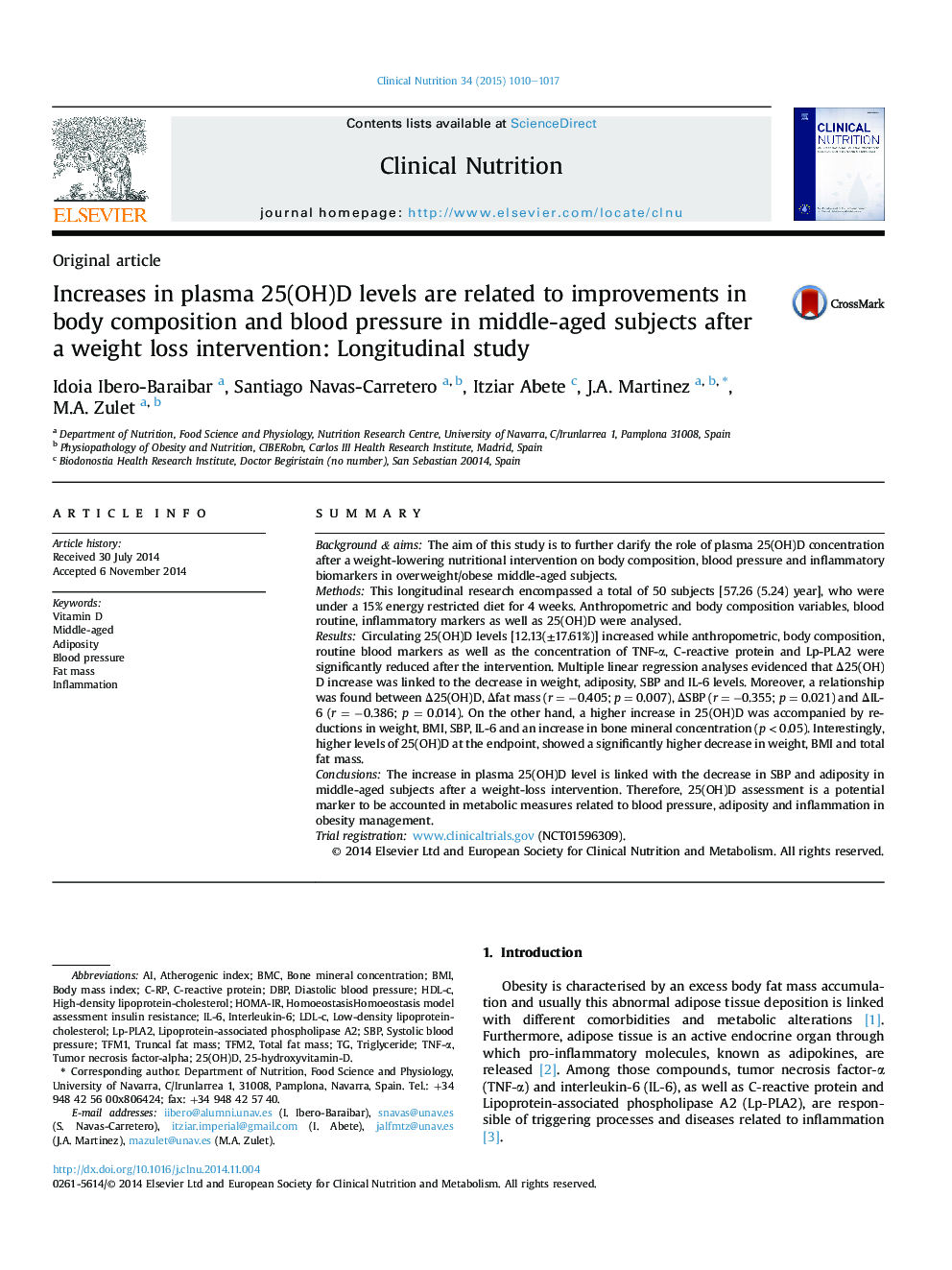| Article ID | Journal | Published Year | Pages | File Type |
|---|---|---|---|---|
| 5872604 | Clinical Nutrition | 2015 | 8 Pages |
SummaryBackground & aimsThe aim of this study is to further clarify the role of plasma 25(OH)D concentration after a weight-lowering nutritional intervention on body composition, blood pressure and inflammatory biomarkers in overweight/obese middle-aged subjects.MethodsThis longitudinal research encompassed a total of 50 subjects [57.26 (5.24) year], who were under a 15% energy restricted diet for 4 weeks. Anthropometric and body composition variables, blood routine, inflammatory markers as well as 25(OH)D were analysed.ResultsCirculating 25(OH)D levels [12.13(±17.61%)] increased while anthropometric, body composition, routine blood markers as well as the concentration of TNF-α, C-reactive protein and Lp-PLA2 were significantly reduced after the intervention. Multiple linear regression analyses evidenced that Î25(OH)D increase was linked to the decrease in weight, adiposity, SBP and IL-6 levels. Moreover, a relationship was found between Î25(OH)D, Îfat mass (r = â0.405; p = 0.007), ÎSBP (r = â0.355; p = 0.021) and ÎIL-6 (r = â0.386; p = 0.014). On the other hand, a higher increase in 25(OH)D was accompanied by reductions in weight, BMI, SBP, IL-6 and an increase in bone mineral concentration (p < 0.05). Interestingly, higher levels of 25(OH)D at the endpoint, showed a significantly higher decrease in weight, BMI and total fat mass.ConclusionsThe increase in plasma 25(OH)D level is linked with the decrease in SBP and adiposity in middle-aged subjects after a weight-loss intervention. Therefore, 25(OH)D assessment is a potential marker to be accounted in metabolic measures related to blood pressure, adiposity and inflammation in obesity management.Trial registrationwww.clinicaltrials.gov (NCT01596309).
